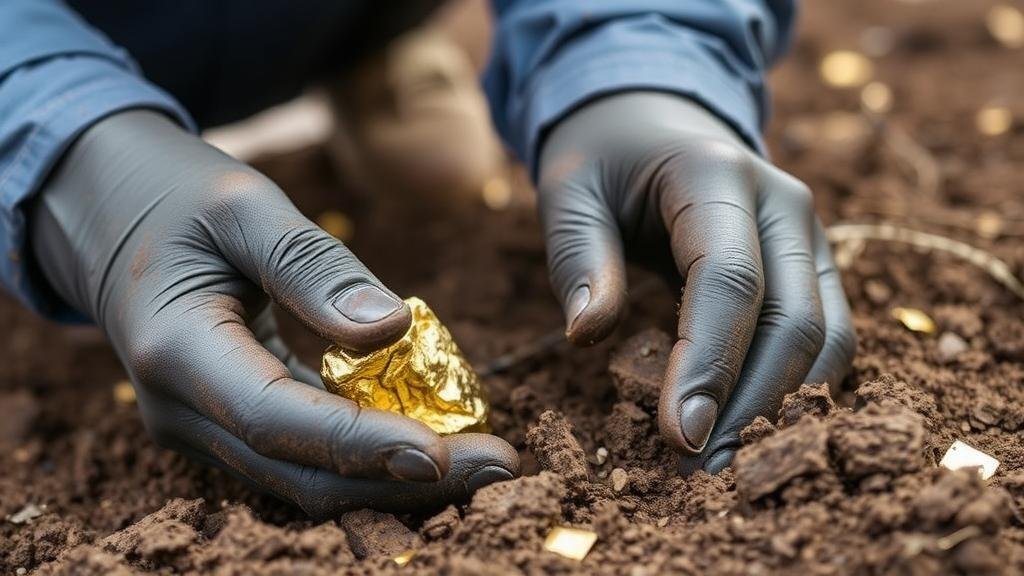Tips for Identifying and Recovering Gold in Dry Soil With Minimal Tools
Tips for Identifying and Recovering Gold in Dry Soil With Minimal Tools
Recovering gold is a pursuit that has fascinated adventurers and treasure hunters for centuries. While many imagine vast rivers or dense forests, gold can be found in dry soil, particularly in regions known for historical gold production. This article provides practical tips for identifying and recovering gold deposits in arid locations while using minimal tools.
Understanding Dry Soil Gold Deposits
Gold can exist in dry soil through a natural process called erosion. Erosion breaks down larger deposits and transports smaller gold fragments through water flows, ultimately leaving them in dried creek beds or sediment layers. Recognizing locations with potential for gold recovery requires some understanding of geologic formations and characteristic soil types.
Identifying Promising Locations
Successful gold prospecting begins with selecting the right locations. Here are key indicators to identify potentially fruitful areas:
- Stream Beds: Look for ancient stream beds where water has receded. e areas often have accumulated gold particles over time.
- Mineralized Zones: Fields near historical mining locations or known mineral deposits increase the chances of finding gold.
- Soil Color and Composition: Darker, clay-rich soils can often indicate higher mineral content, which may include gold.
- Topographical Changes: Regions with hills or uneven terrain may trap gold particles in lower areas.
Required Minimal Tools
While sophisticated tools can enhance the efficiency of gold recovery, they are not strictly necessary. Here are essential tools for the minimalist gold prospector:
- Shovel or Hand Trowel: Useful for digging through soil and sediment layers.
- Panning Dish: A simple yet effective method for separating gold from soil and gravel.
- Sieve or Classifier: This tool helps to sort larger rocks from finer materials, improving the efficiency of panning.
Techniques for Gold Recovery
Once you have identified a promising location and gathered the necessary tools, it is time to employ techniques for gold recovery.
- Layered Panning: Start by digging up layers of soil and placing them in the panning dish. Use water to help separate lighter materials, allowing you to see golden flakes more clearly.
- Dry Washing: In arid conditions, using a dry washer can facilitate recovery without the need for water. This method consists of aerating soil to encourage gold to sink while lighter materials are blown away.
- Using a Magnet: Sometimes, soil may also contain iron or other metals, which can interfere with gold recovery. A simple magnet can help in the pre-sifting process.
Learning from Real-World Case Studies
Numerous prospectors have successfully recovered gold using these techniques. For example, a group of treasure hunters in the Mojave Desert utilized minimal tools for a weekend expedition. focused on an area near an old riverbed and employed basic panning techniques alongside a dry washer, ultimately recovering several grams of gold. This case exemplifies how even amateur prospectors can achieve success with perseverance and the right methods.
Key Considerations and Precautions
While the allure of gold prospecting is significant, it is essential to adhere to legal and environmental considerations:
- Legal Regulations: Always research and comply with local laws regarding prospecting, including necessary permits and land ownership.
- Environmental Impact: Practice responsible mining by minimizing disturbance to the ecosystem and avoiding contaminating waterways.
Conclusion
Identifying and recovering gold in dry soil is an endeavor that can be both rewarding and exciting. By understanding where to look, utilizing minimal yet effective tools, and applying sound techniques, novice and seasoned prospectors alike can enhance their chances of finding this precious metal. Remember to approach the activity responsibly and legally to ensure that gold prospecting remains an enjoyable pursuit for generations to come.
Actionable Takeaways
- Research historical mining areas and geological formations in your region.
- Gather basic tools such as a shovel, panning dish, and sieve.
- Apply layered panning and dry washing techniques to improve recovery rates.
- Stay informed on legal regulations and practice environmental stewardship.



